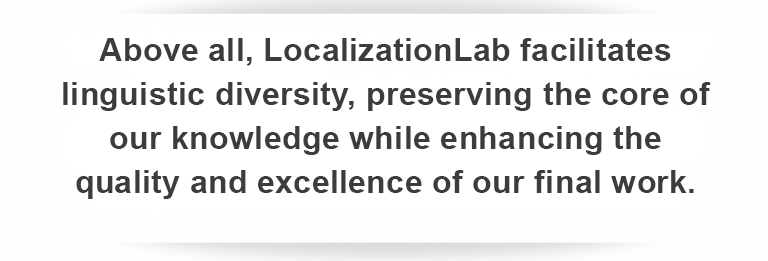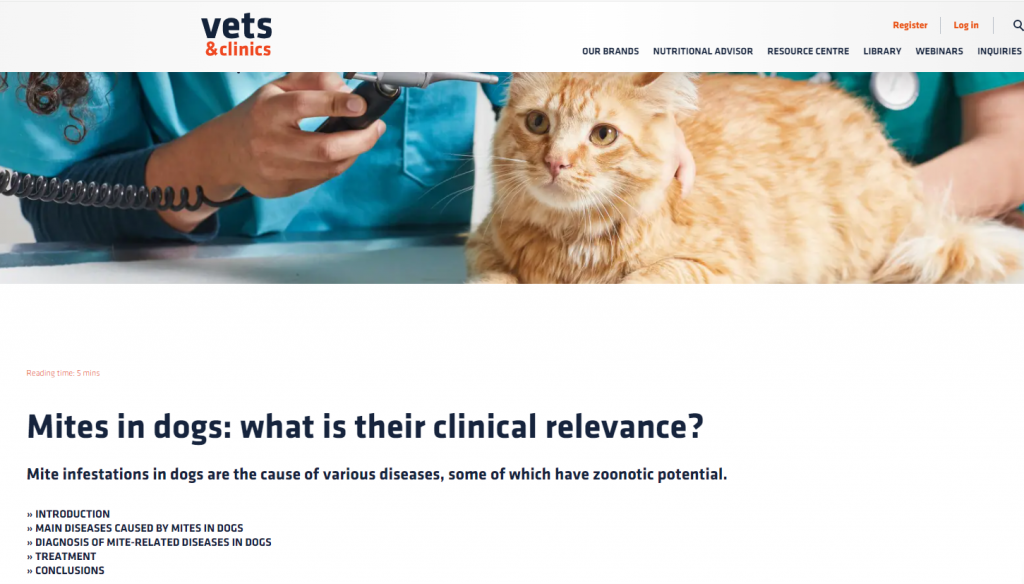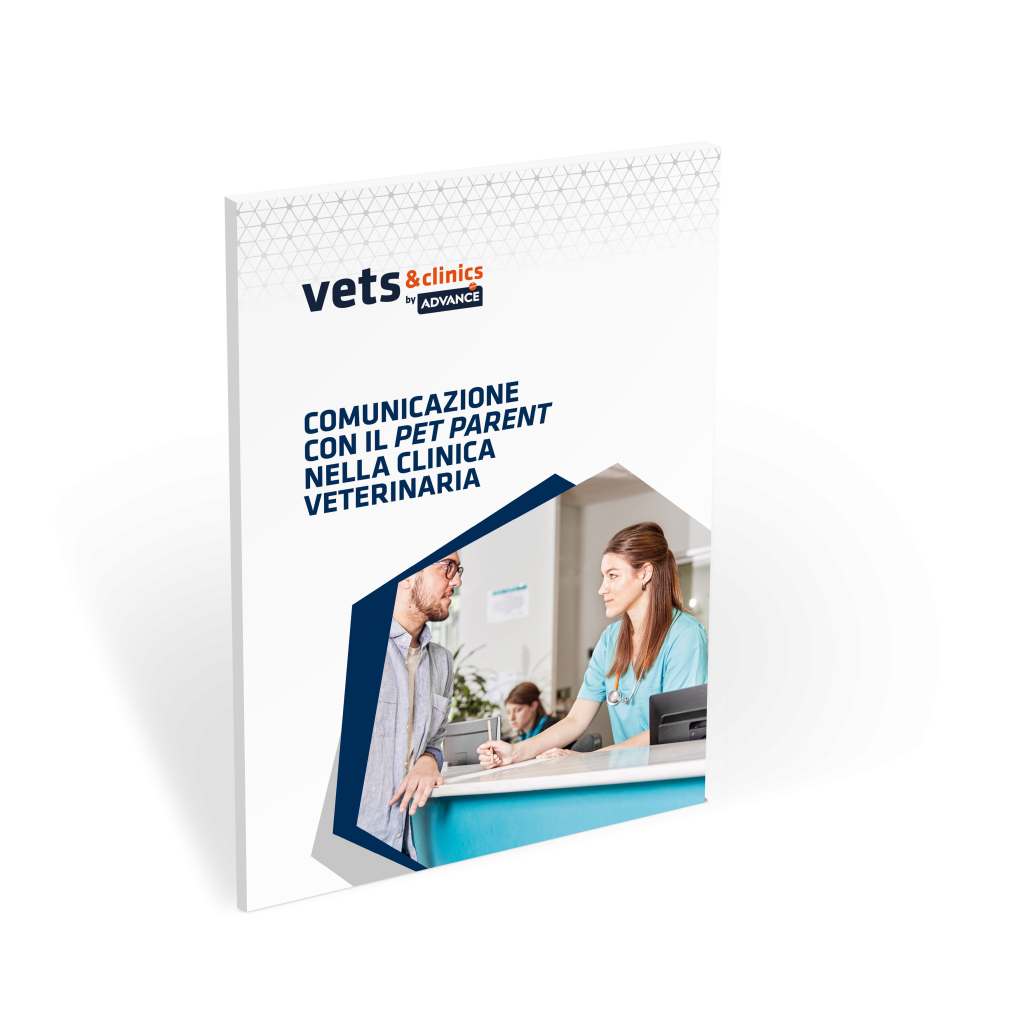Affinity Petcare and LocalizationLab celebrating 10 years of language project collaboration
Time truly flies – it’s been 10 years since we began our partnership with Affinity Petcare, yet it feels like only yesterday.
Our collaboration with Spain’s leading pet food brand began in early 2015, and since then, we’ve successfully completed over 1000 translation projects in multiple language combinations including Italian, French, English, Portuguese, Russian, Chinese, Polish, Catalan, and Spanish, providing an extensive range of services we’ve highlighted below.
1- Banners and Newsletters
Our collaboration built up gradually as we got to know each other, beginning with banner projects for their website and newsletters. For high-visibility elements like these, we quickly realised the importance of thoroughly reviewing each translation in its final layout to ensure everything made perfect sense in context.

2- Vets&Clinics the specialised platform for veterinarians
Next came the Vets&Clinics blog, a digital knowledge and training platform for the veterinary community in Spain, France, Italy and Portugal. To reach such a diverse audience, Affinity realised the importance of publishing its blog content in different languages. We managed the entire process, involving translation, revision, and uploading to the content management system, in four languages: French, Italian, English and Portuguese. This website serves as a resource for veterinarians, offering news on products, insights into pet pathologies, tips for cat and dog owners, and information on treatments for various conditions – in other words, highly specialised information.
To meet the demands of this project, we conducted a translation test reviewed by Affinity veterinary collaborators in each country. We formed teams of translators and reviewers specialised in veterinary medicine to achieve the quality level required and ensure the accurate interpretation of the original text in each target language.

In internet-related projects, SEO is essential so we coordinate closely with the marketing team to ensure articles are well positioned. The first step in our process is to translate each article’s primary keyword and assess its SEO value. If necessary, we adapt it to better suit the target audience, aiming to integrate it two or three times into the article.
In the first years, after our linguists translated and reviewed the articles, Affinity’s experts on the subject in each language conducted a final review to check whether any more country-specific adjustments were required for their country.
Revisions were managed by uploading the articles to Drive, allowing us to track changes, consult directly with reviewers when needed, and keep a backup in the company’s content management system.
Over the years, we’ve maintained the same team of linguists (experience is key!) and their consistent quality has meant that client reviews are now rarely needed.
One important part of our process involves checking the links within translated articles. For example, if the original article contains links to Spanish content and we’re working on a French version, we’ll always check if the referenced links have corresponding French versions to include.
Since these articles are aimed at a European audience, we always use UK English and European Portuguese.
Alongside quality, meeting publication deadlines is crucial. It is essential to keep everyone involved in the project informed of the schedule, from Affinity’s manager to the marketing team, and reviewers in each country. This ensures everyone is aligned, knows when to intervene, and the project is always delivered on time.

Once the articles are finalised, our task doesn’t stop there. We upload the translations directly to the appropriate content management system (CMS). Over the past ten years, we have adapted to several changes in CMS platforms, from WordPress and Drupal to Oracle, each with its own unique requirements when it comes to managing formats such as titles, links, images and meta descriptions, but our team has consistently handled every aspect of the process, from keyword translation to uploading articles to the website.
To create more comprehensive content, we’ve also worked on merging articles. This involves combining multiple articles on similar topics into a single piece, ensuring no information is repeated. For this task, our professionals review each translated article, then carefully read, synthesise, and prepare one unified article that meets the content standards.
3- eBooks
We’ve translated numerous eBooks and specialised publications available for download on the website, along with materials promoting them, such as emails.

We also rewrote an eBook to improve its fluency. Again, it was vital to ensure that the linguist handling this task had sufficient knowledge of the subject to rephrase the content accurately without altering its meaning.
Throughout the process, we have always kept our translation memories updated across all language combinations to enable us to quickly identify repeated content, avoiding unnecessary re-translation and preventing Affinity from incurring duplicate translation costs.
To keep them up to date, we ensure that every translated document is included in the translation memory, and every time a reviewer requests a change, we make sure it is incorporated into the memories.
Over these 10 years, we have also translated the following for Affinity:
- More than 50 infographics, posters and brochures
- Product descriptions for Amazon
- Parts of Affinity’s corporate website
- More than 40 specialised presentations on veterinary nutrition
- Marketing campaigns, Christmas and questions for a contest (quiz).
- YouTube descriptions
- Texts for LinkedIn
I’m sure we’ve left something out, but this covers the bulk of the work we’ve done for Affinity. Not at all bad, right?
For books and posters, the final formatting and desktop publishing (DTP) was completed using the same tools as the original versions, such as InDesign and Adobe Illustrator.
We also prepared thumbnail images of the book covers for use in emails and on the website.
4- Videos
Over the years, another task we have managed is the transcribing, translating, subtitling and syncing webinar videos. In some cases, we added voiceovers too, using either human or digital voices. Recently, we’ve tested AI tools for translating and add voices to videos. Our role here is focused on editing and ensuring accuracy before dubbing.
With Affinity’s approval, for some time now we have also begun using AI-based automatic translation tools for specific text types and language combinations where it proves effective. Following tests, we have seen that this approach, when paired with thorough post-editing, has reduced costs and turnaround times without compromising on quality.
As each project concludes, completed translations for books, posters, articles, videos and infographics are archived on Affinity’s server to ensure everything is well-organised and easily accessible to the team when needed.
In the words of Josep Campmany, Professional Health Manager at Affinity Petcare, “From day one, it has been a pleasure to collaborate with the LocalizationLab team. They are efficient, proactive and coordinate well with various suppliers, proposing solutions to prevent delays and misinterpretations. Above all, they facilitate linguistic diversity, preserving the core of our knowledge while enhancing the quality and excellence of our final work.”
These ten years of interesting and varied projects have helped us learn, improve and grow alongside the great team of Affinity Petcare professionals. Thank you for making us feel like part of your team! We look forward to many more years of collaboration to help bring your products to a global audience.
